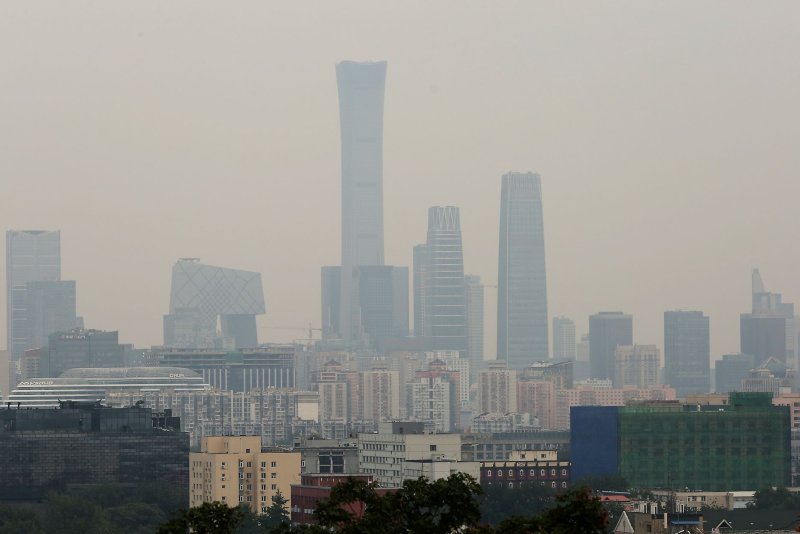Beijing, like many other major world cities, experienced slight improvements in air quality as a result of the lockdowns necessitated by the COVID-19 pandemic. File Photo by Stephen Shaver/UPI |
License Photo
Jan. 13 (UPI) -- Last spring, when lockdowns and stay-at-home orders depressed industrial activity and curbed traffic volumes, many city-dwellers noted a reduction in urban pollution.
Several studies examining the early environmental impacts of the COVID-19 pandemic showed lockdown orders were followed by declines in nitrogen dioxide, NO2, emissions, often used as a proxy for common air pollutants like ozone, O3, and smog.
According to a new paper, published Wednesday in the journal Science Advances, lockdowns only put a small dent in the problem of urban air pollution.
Many of the earliest investigations failed to account for the effects of weather, and thus, overestimate impacts of lockdowns on air pollution.
For the new research, scientists analyzed changes in the concentrations of NO2, O3 and fine particulate matter in 11 major metropolitan areas: Beijing, Wuhan, Milan, Rome, Madrid, London, Paris, Berlin, New York, Los Angeles and Delhi.
When scientists accounted for the effects of weather on air pollutants, they found lockdowns were responsible for modest declines in NO2 and particulate matter. In Paris and London, lockdown restrictions had no impact on fine particulate matter concentrations.
Fine particulate matter, or PM2.5, which includes aerosols such as soot, smog and ash, is harmful to human heart and lung health.
The new data analysis showed lockdowns actually precipitated a slight increase in ozone levels in many of the world's major cities. Ozone can be harmful to crops.
"Rapid, unprecedented reduction in economic activity provided a unique opportunity to study the impact of interventions on air quality," lead study author Zongbo Shi said in a news release.
"Emission changes associated with the early lockdown restrictions led to abrupt changes in air pollutant levels but their impacts on air quality were more complex than we thought, and smaller than we expected," said Shi, a professor of atmospheric biogeochemistry at the University of Birmingham in Britain.
"Weather changes can mask changes in emissions on air quality," Shi said. "Importantly, our study has provided a new framework for assessing air pollution interventions, by separating the effects of weather and season from the effects of emission changes."
Though lockdown-related restrictions did yield modest air quality improvements, the benefits were short-lived.
And even with COVID-19 cases rising across much of Europe and North America, it appears unlikely the kinds of blanket lockdowns utilized last spring will be deployed once again.
During the brief decline in NO2 and PM2.5, the data showed city ozone levels increased -- many air pollutants react to destroy ozone. With less vehicular exhaust and fewer industrial contaminants being emitted into the atmosphere, less ozone was destroyed.
By studying the relationships between kinds of air pollution, how they react to policy choices and economic shifts, researchers hope to craft more targeted air pollution reduction plans.
"Future mitigation measures require a systematic air pollution control approach towards NO2, O3 and PM2.5, which is tailored for specific cities, to maximize the overall benefits of air quality changes to human health," said study co-author William Bloss, a professor of atmospheric sciences at the University of Birmingham.















